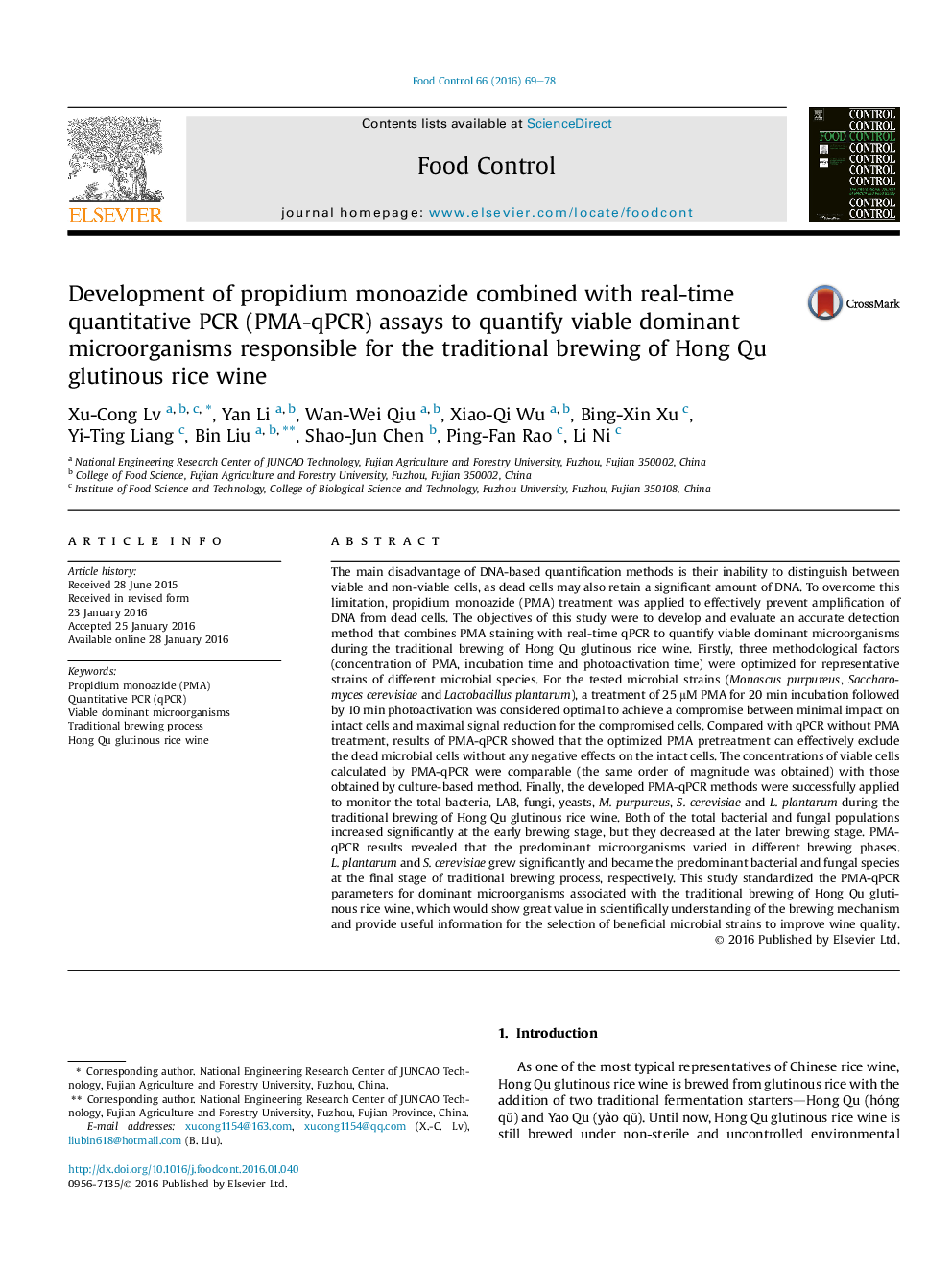| کد مقاله | کد نشریه | سال انتشار | مقاله انگلیسی | نسخه تمام متن |
|---|---|---|---|---|
| 4559176 | 1628396 | 2016 | 10 صفحه PDF | دانلود رایگان |

• PMA-qPCR assays were established for rice wine microorganisms.
• The PMA treatment parameters were optimized to achieve accurate quantitative results.
• The efficiency of PMA treatment was verified using artificial microbial mixtures.
• The established assays were applied to Hong Qu glutinous rice wine.
The main disadvantage of DNA-based quantification methods is their inability to distinguish between viable and non-viable cells, as dead cells may also retain a significant amount of DNA. To overcome this limitation, propidium monoazide (PMA) treatment was applied to effectively prevent amplification of DNA from dead cells. The objectives of this study were to develop and evaluate an accurate detection method that combines PMA staining with real-time qPCR to quantify viable dominant microorganisms during the traditional brewing of Hong Qu glutinous rice wine. Firstly, three methodological factors (concentration of PMA, incubation time and photoactivation time) were optimized for representative strains of different microbial species. For the tested microbial strains (Monascus purpureus, Saccharomyces cerevisiae and Lactobacillus plantarum), a treatment of 25 μM PMA for 20 min incubation followed by 10 min photoactivation was considered optimal to achieve a compromise between minimal impact on intact cells and maximal signal reduction for the compromised cells. Compared with qPCR without PMA treatment, results of PMA-qPCR showed that the optimized PMA pretreatment can effectively exclude the dead microbial cells without any negative effects on the intact cells. The concentrations of viable cells calculated by PMA-qPCR were comparable (the same order of magnitude was obtained) with those obtained by culture-based method. Finally, the developed PMA-qPCR methods were successfully applied to monitor the total bacteria, LAB, fungi, yeasts, M. purpureus, S. cerevisiae and L. plantarum during the traditional brewing of Hong Qu glutinous rice wine. Both of the total bacterial and fungal populations increased significantly at the early brewing stage, but they decreased at the later brewing stage. PMA-qPCR results revealed that the predominant microorganisms varied in different brewing phases. L. plantarum and S. cerevisiae grew significantly and became the predominant bacterial and fungal species at the final stage of traditional brewing process, respectively. This study standardized the PMA-qPCR parameters for dominant microorganisms associated with the traditional brewing of Hong Qu glutinous rice wine, which would show great value in scientifically understanding of the brewing mechanism and provide useful information for the selection of beneficial microbial strains to improve wine quality.
Journal: Food Control - Volume 66, August 2016, Pages 69–78